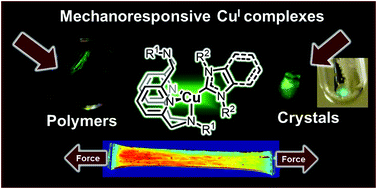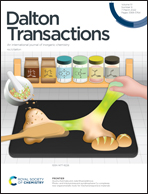Photo- and triboluminescent pyridinophane Cu complexes: new organometallic tools for mechanoresponsive materials
Abstract
The development of mechanoresponsive polymers has emerged as a new, attractive area of research in which changes at the molecular level exert macrolevel effects in the bulk material, and vice versa, as simple mechanical action on the bulk material exerts an effect on bonding at the microlevel. In many of these polymers, molecules known as mechanopores, which undergo chemical or conformational changes in response to mechanical action, are typically incorporated into the polymer chain. The field has been dominated by the use of organic mechanophores, and only recently has the use of organotransition metal complexes as tunable, dynamic mechanophores emerged as a promising research direction. Herein we will summarize recent developments towards the use of N-heterocyclic carbene (NHC) complexes of copper with dynamic, conformationally fluxional pyridinophane ligands as new organometallic mechanophores. We will discuss the interplay between the dynamic behaviour, steric bulk, and the photoluminescent and triboluminescent properties of these complexes, which enabled their use in the development of new, mechanoresponsive polymer materials.

- This article is part of the themed collection: 2022 Frontier and Perspective articles


 Please wait while we load your content...
Please wait while we load your content...